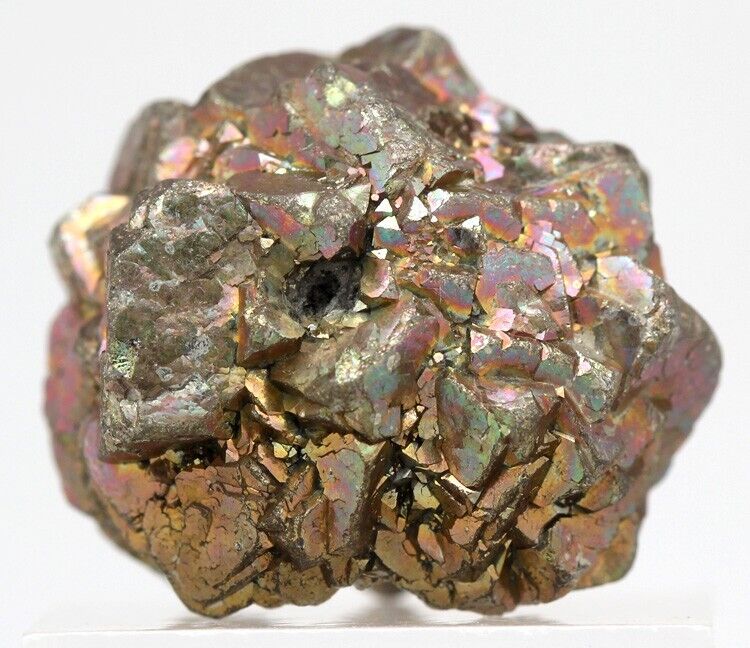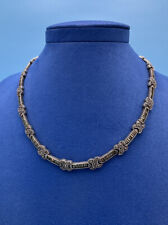RARE MARCASITE NODULE Iridescent Crystal Cluster Mineral Specimen MADAGASCAR For Sale

When you click on links to various merchants on this site and make a purchase, this can result in this site earning a commission. Affiliate programs and affiliations include, but are not limited to, the eBay Partner Network.
RARE MARCASITE NODULE Iridescent Crystal Cluster Mineral Specimen MADAGASCAR:
$26.95
This specimen weighs 28.36 grams. It measures 27 mm x 23 mm x 21 mm.I offer a shipping discount for customers who combine their payments for multiple purchases into one payment!The discount is regular shipping price for the first item and just 50 cents for each additional item!
To be sure you get your shipping discount just make sure all the items you want to purchase are in your cart.
sales you win are added to your cart automatically.
For any \"buy it now\" items or second chance offers, be sure to click the \"add to cart\" button, NOT the \"buy it now\" button.
Onceall of your items are in your cart just pay for them from your cart andthe combined shipping discount should be applied automatically.I offer a money back guarantee on every item I sell.
If you are not 100% happy with your purchase just send me a message to let me know
and I will buy back the item for your full purchase price.
Hi there. I\'m selling this lovely marcasite cluster specimen. It is from Madagascar. If you have any questions, do not hesitate to ask me. Have fun offerding, thanks so much for visiting my sale and have a great day!
MarcasiteFrom Wikipedia, the free encyclopediaJump to navigationJump to searchThis article is about the mineral. For the jewelry, see Marcasite with tarnish (8x6 cm)GeneralCategory Sulfide mineralFormula(repeating unit) FeS2Strunz classification 2.EB.10aCrystal system OrthorhombicCrystal class Dipyramidal (mmm)H-M symbol: (2/m 2/m 2/m)Space group PnnmUnit cell a = 4.436 Å,b = 5.414 Å,c = 3.381 Å; Z = 2IdentificationFormula mass 119.98 g/molColor Tin-white on fresh surface, pale bronze-yellow, darkening on exposure, iridescent tarnishCrystal habit Crystals typically tabular on {010}, curved faces common; stalactitic, reniform, massive; cockscomb and spearhead shapes due to twinning on {101}.Twinning Common and repeated on {101}; less common on {011}.Cleavage Cleavage: {101}, rather distinct; {110} in tracesFracture Irregular/UnevenTenacity BrittleMohs scale hardness 6-6.5Luster MetallicStreak Dark-grey to black.Diaphaneity OpaqueSpecific gravity 4.875 calculated, 4.887 measuredPleochroism [100] creamy white; [010] light yellowish white; [001] white with rose-brown tint. Anisotropism: Very strong, yellow through pale green to dark greenReferences [1][2][3][4]The mineral marcasite, sometimes called white iron pyrite, is iron sulfide (FeS2) with orthorhombic crystal structure. It is physically and crystallographically distinct from pyrite, which is iron sulfide with cubic crystal structure. Both structures do have in common that they contain the disulfide S22− ion having a short bonding distance between the sulfur atoms. The structures differ in how these di-anions are arranged around the Fe2+ cations. Marcasite is lighter and more brittle than pyrite. Specimens of marcasite often crumble and break up due to the unstable crystal structure.
On fresh surfaces it is pale yellow to almost white and has a bright metallic luster. It tarnishes to a yellowish or brownish color and gives a black streak. It is a brittle material that cannot be scratched with a knife. The thin, flat, tabular crystals, when joined in groups, are called \"cockscombs.\"
In marcasite jewellery, pyrite used as a gemstone is termed \"marcasite\" – that is, marcasite jewellery is made from pyrite, not from the mineral marcasite. In the late medieval and early modern eras the word \"marcasite\" meant both pyrite and the mineral marcasite (and iron sulfides in general).[5] The narrower, modern scientific definition for marcasite as orthorhombic iron sulfide dates from 1845.[3] The jewellery sense for the word pre-dates this 1845 scientific redefinition. Marcasite in the scientific sense is not used as a gem due to its brittleness.Contents1 Occurrence2 Varieties and blends3 Alteration4 References5 External linksOccurrence
Iridescent cluster of marcasite crystals (3.3 x 2.1 x 1.4 cm)
Two halves of a ball of radiating marcasite from France.Marcasite can be formed as both a primary or a secondary mineral. It typically forms under low-temperature highly acidic conditions. It occurs in sedimentary rocks (shales, limestones and low grade coals) as well as in low temperature hydrothermal veins. Commonly associated minerals include pyrite, pyrrhotite, galena, sphalerite, fluorite, dolomite and calcite.[2]
As a primary mineral it forms nodules, concretions and crystals in a variety of sedimentary rock, such as in the chalk layers found on both sides of the English Channel at Dover, Kent, England and at Cap Blanc Nez, Pas De Calais, France, where it forms as sharp individual crystals and crystal groups, and nodules (similar to those shown here).
As a secondary mineral it forms by chemical alteration of a primary mineral such as pyrrhotite or chalcopyrite.
Varieties and blendsBlueite (S.H.Emmons): Nickel variety of marcasite, found in Denison Drury and Townships, Sudbury Dist., Ontario, Canada.
Lonchidite (August Breithaupt): Arsenic variety of marcasite, found at Churprinz Friedrich August Erbstolln Mine (Kurprinz Mine), Großschirma Freiberg, Erzgebirge, Saxony, Germany; ideal formula Fe(S, As)2.Synonyms for this (Sandberger) described at Bernhard Mine near Hausach (Baden), Germany.Sperkise : designates a marcasite having twin spearhead crystal on {101}. Sperkise derives from the German Speerkies (Speer meaning spear and Kies gravel or stone). This twin is very common in the marcasite of a chalky origin, particularly those from the Cap Blanc Nez.
AlterationMarcasite reacts more readily than pyrite under conditions of high humidity. The product of this disintegration is iron(II) sulfate and sulfuric acid. The hydrous iron sulfate forms a white powder consisting of the mineral melanterite, FeSO4·7H2O.[6]
This disintegration of marcasite in mineral collections is known as \"pyrite decay\". When a specimen goes through pyrite decay, the marcasite reacts with moisture and oxygen in the air, the sulfur oxidizing and combining with water to produce sulfuric acid that attacks other sulfide minerals and mineral labels. Low humidity (less than 60%) storage conditions prevents or slows the reaction.[7]

Related Items:
RARE MARCASITE NODULE Iridescent Crystal Cluster Mineral Specimen MADAGASCAR
$29.95
RARE MARCASITE NODULE Iridescent Crystal Cluster Mineral Specimen MADAGASCAR
$29.95
RARE 925 Solid Sterling Silver Vintage Real Marcasite stone Chain 18” 8mm 46.2g
$299.99



